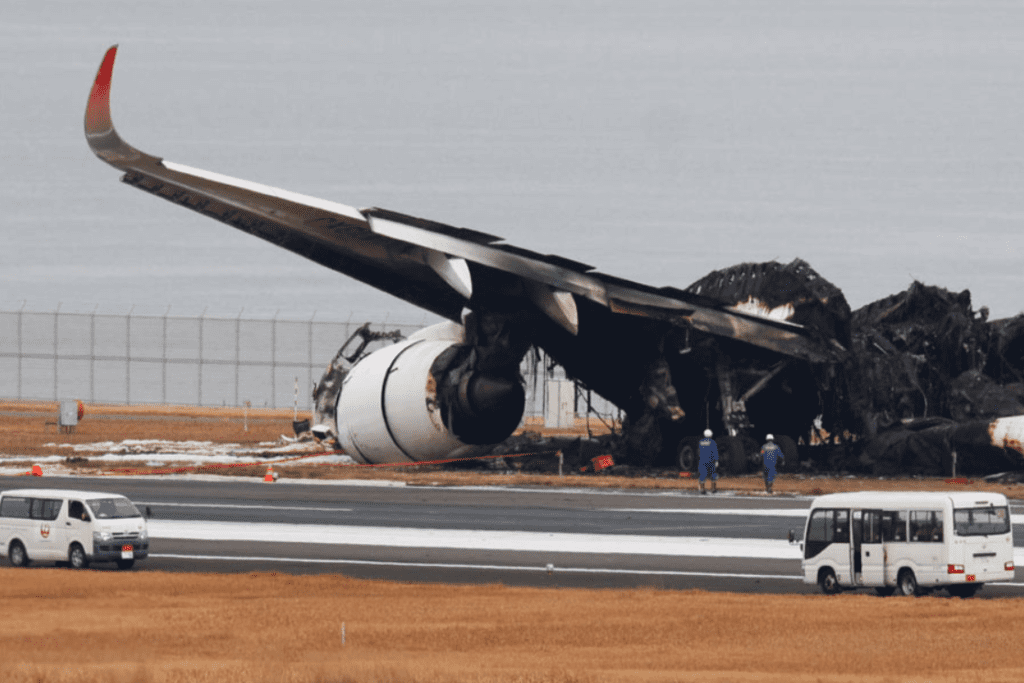Japan Airlines (JAL) announced on Thursday that it anticipates incurring losses exceeding $100 million following a catastrophic incident involving one of its planes colliding with another aircraft on the runway at Tokyo’s Haneda airport earlier this week.
All 379 passengers on board the JAL Airbus A350 widebody jet managed to evacuate before the aircraft became fully engulfed in flames, a blaze that took more than six hours to extinguish.
Tragically, five out of the six crew members on the other aircraft, a Coast Guard plane en route to deliver aid to quake-hit regions on Japan’s west coast, lost their lives, while the surviving pilot suffered severe injuries.
Transport authorities are currently investigating the circumstances that led to the Coast Guard plane entering the runway where the passenger jet was landing.
Simultaneously, the police are exploring potential professional negligence in the case, according to media reports.


Despite air traffic control instructing the Coast Guard plane to proceed to a holding point near the runway just before the crash, transcripts suggest the pilot acknowledged these instructions.
Japanese authorities revealed that the passenger jet had been cleared to land, but the smaller plane had not received clearance for take-off.
The Coast Guard pilot claims to have had permission to enter the runway, as reported by Coast Guard officials.
Aviation experts note that it usually takes the failure of multiple safety measures for an airplane accident to occur.
A bulletin posted by U.S. regulators before the accident indicated that a strip of stop lights, intended as an extra safety measure to prevent wrong turns, was out of service.
Japan Airlines estimated an operating loss of about 15 billion yen ($104.81 million) due to the collision, with the loss covered by insurance.
The impact on the company’s earnings forecast for the financial year ending March 31 is still under assessment.
Insurance industry sources suggest that U.S. insurer AIG was the lead insurer on a $130 million “all-risks” policy for the two-year-old plane destroyed by the fire. However, AIG declined to comment.
The collision resulted in the first-ever global hull loss for the A350 model, which entered commercial service in 2015. JAL’s shares initially fell but later rose 0.4% as trading resumed after the New Year’s holiday.
Despite the challenging circumstances, the JAL crew successfully evacuated all passengers within 18 minutes, following emergency procedures even as passengers panicked, intercom systems failed, and some evacuation chutes became unusable due to the fire.
The aftermath of the incident has led to numerous flight cancellations and delays at Haneda airport, impacting hundreds of flights.
Additionally, nearly 200 passengers were stranded overnight at New Chitose airport, where flight JL516 had departed, due to delays affecting incoming flights.
Teenager Shatters Tetris Limits: A Glimpse Into Human Potential

